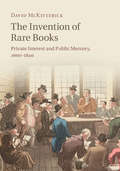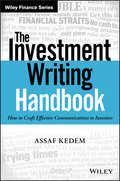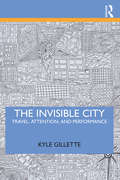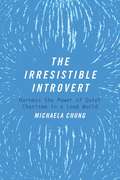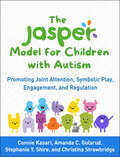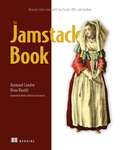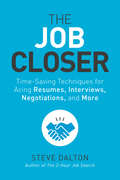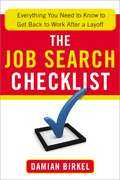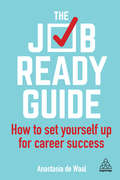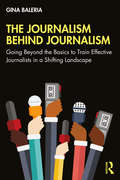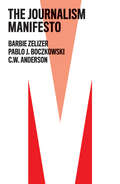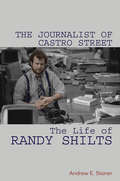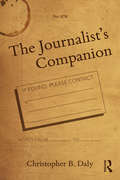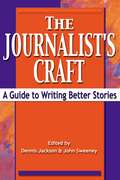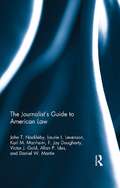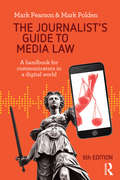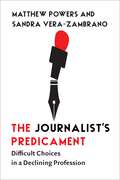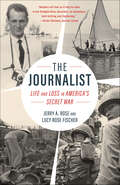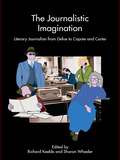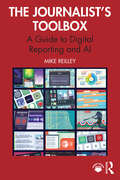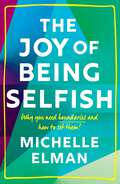- Table View
- List View
The Invention of Rare Books: Private Interest and Public Memory, 1600–1840
by David McKitterickWhen does a book that is merely old become a rarity and an object of desire? David McKitterick examines, for the first time, the development of the idea of rare books, and why they matter. Studying examples from across Europe, he explores how this idea took shape in the sixteenth and seventeenth centuries, and how collectors, the book trade and libraries gradually came together to identify canons that often remain the same today. In a world that many people found to be over-supplied with books, the invention of rare books was a process of selection. As books are one of the principal means of memory, this process also created particular kinds of remembering. Taking a European perspective, McKitterick looks at these interests as they developed from being matters of largely private concern and curiosity, to the larger public and national responsibilities of the first half of the nineteenth century.
The Investment Writing Handbook: How to Craft Effective Communications to Investors (Wiley Finance)
by Assaf KedemThe writing "bible" for financial professionals The Investment Writing Handbook provides practical, accessible guidance for crafting more effective investor communications. Written by an award-winning writer, editor, and speechwriter, this book explains the principles and conventions that help writing achieve its purpose; whether you need to inform, educate, persuade, or motivate, you'll become better-equipped to develop a broad range of communications and literature for investor consumption. Examples from real-world financial institutions illustrate expert execution, while explanations and advice targeted specifically toward investor relations give you the help you need quickly. From white papers and investment commentary to RFPs, product literature, and beyond, this book is the financial writer's "bible" that you should keep within arm's reach. Investment writing is one of the primary influences on investors' attitudes. It educates, informs decisions, shapes opinions, and drives behavior—so shouldn't it be expertly-crafted to achieve its intended goal? This book explains the "tricks of the trade" to help you get your message across. Understand the principles of effective investor communication Master the conventions of informative and persuasive writing Examine well-written sample documents from real-world institutions Improve research papers, presentations, investor letters, marketing literature, and more Virtually all firms with investors as clients need to communicate to them regularly, but few financial professionals receive formal training in investor communications. When investors' opinions, attitudes, and actions determine the health of your company, it is vitally important that these communications not be left to chance. The Investment Writing Handbook provides essential guidance and clear explanations to help you transform your communication strategy, execution, and results.
The Invisible City: Travel, Attention, and Performance
by Kyle GilletteThe Invisible City explores urban spaces from the perspective of a traveller, writer, and creator of theatre to illuminate how cities offer travellers and residents theatrical visions while also remaining mostly invisible, beyond the limits of attention. The book explores the city as both stage and content in three parts. Firstly, it follows in pattern Italo Calvino's novel Invisible Cities, wherein Marco Polo describes cities to the Mongol emperor Kublai Khan, to produce a constellation of vignettes recalling individual cities through travel writing and engagement with artworks. Secondly, Gillette traces the Teatro Potlach group and its ongoing immersive, site-specific performance project Invisible Cities, which has staged performances in dozens of cities across Europe and the Americas. The final part of the book offers useful exercises for artists and travellers interested in researching their own invisible cities. Written for practitioners, travellers, students, and thinkers interested in the city as site and source of performance, The Invisible City mixes travelogue with criticism and cleverly combines philosophical meditations with theatrical pedagogy.
The Invisible Game: The Secrets and the Science of Winning Minds and Winning Deals
by Kai-Markus Mueller Gabriele RehbockCutting-edge science can make all the difference for salespeople in a time when they are facing a business world in transformation. In The Invisible Game: The Secrets and the Science of Winning Minds and Winning Deals, neuroscientist Kai-Markus Mueller and sales professional Gabriele Rehbock deliver a hands-on guide to the hidden dynamics that influence the outcomes of most business deals. In plain English, the book unpacks recently discovered insights from psychology, behavioural economics, and neuroscience and explains how to apply them to your advantage in real-life business situations. The authors show you how to influence buying decisions and how to successfully respond to challenging business situations in order to put you in control of the levers that drive sales success. You&’ll also find Advanced strategies and tactics that offer a lasting edge in negotiations, sales and other business transactions Smart techniques to build rewarding customer relationships The psychology behind gains and losses revealing new keys to profitable pricing Real-life advice on how to counter a buyer&’s intimidation tactics: time, uncertainty, fear, and silence An essential, step-by-step playbook for sales professionals, The Invisible Game will also earn a place on the bookshelves of entrepreneurs, business owners, and other independent professionals—like lawyers, accountants, freelancers, consultants, and programmers—who regularly sell their services to other businesses.
The Irresistible Introvert: Harness the Power of Quiet Charisma in a Loud World
by Michaela ChungLearn the tools to shed your mask of extroversion, develop your own magnetism, and reveal the true you.One third to one half of Americans are introverts in a culture that celebrates-even enforces-an ideal of extroversion and a cult of personality. Political leaders are charismatic, celebrities bask in the spotlight, and authority figures are assertive. It is no surprise that a "quiet revolution” has begun to emerge among the "invisible” half of the population, asserting that they are just as powerful in their own unique ways.The Irresistible Introvert embodies the spirit of this revival and breaks down the myth that charisma is reserved for extroverts only. This mini manifesto shows introverts how to master the art of quiet magnetism in a noisy world-no gregariousness required! Within these pages, you’ll discover how to shed the mask of extroversion and reveal a more compelling (and authentic) you. You’ll also learn how to: Master the inner game of intrigue Manage your energy for optimal engagement Create an emotional ecosystem for charisma Establish introverted intimacy Cultivate communication skills for quiet typesAs a "professional” charismatic introvert, author Michaela Chung demonstrates that you no longer have to forcefully push yourself outward into the world against your nature, but can rather magnetize people inward toward the true you. In the process, you’ll learn to embrace your "innie life” and discover potential you never knew you had.
The Israeli-Palestinian Conflict in the British Press
by Ruth Sanz SabidoThe Israeli-Palestinian Conflict in the British Press provides an extensive empirical analysis of how the Israeli-Palestinian conflict has been constructed in British national newspapers since 1948. It traces the evolution of representations of the conflict by placing them in a historical context, with particular reference to Britain’s postcolonial relation to Palestine, and by presenting an in-depth analysis of the evolution of press language, including the use of terms such as ‘terrorism’ and ‘terrorist’ to classify agents of political violence. It applies an original approach to the study of media coverage, using a Postcolonial Critical Discourse Analysis framework, an innovative method that examines selected case studies in relation to theories of postcolonialism and discourse. Using this unique hybrid methodology, Sanz Sabido provides a thorough and precise unpicking of a highly mediated conflict.
The JASPER Model for Children with Autism: Promoting Joint Attention, Symbolic Play, Engagement, and Regulation
by Connie Kasari Amanda C. Gulsrud Stephanie Y. Shire Christina StrawbridgeThis full-color, clinician-friendly manual is the authoritative guide to implementing the Joint Attention, Symbolic Play, Engagement, and Regulation (JASPER) intervention. With a strong evidence base, JASPER provides a clear, flexible structure to bolster early skills core to social communication development. The authors show how to assess 1- to 8-year-olds with autism spectrum disorder (ASD), set treatment targets, choose engaging play materials, tailor JASPER strategies to each individual, and troubleshoot common challenges. In a convenient large-size format, the manual features case examples, learning exercises, and reproducible clinical tools. At the companion website, clinicians can download and print the reproducible materials as well as a supplemental annotated bibliography.
The Jamstack Book: Beyond static sites with JavaScript, APIs, and markup
by Raymond Camden Brian RinaldiJamstack = JavaScript, APIs, and Markup. Use established standard technologies to build super-fast static websites without sacrificing rich, dynamic features.In The Jamstack Book, you will learn how to: Use different static site generators to build websites Deploy Jamstack sites with 11ty, Next.js, Hugo, and Jekyll Add dynamic capabilities like form processing and eCommerce Enhance your Jamstack site with serverless capabilities Integrate a CMS with a Jamstack site Jamstack sites use JavaScript, APIs, and Markup to create fast, dynamic pages without the overhead of heavyweight frameworks. The Jamstack Book is your essential guide to this exciting new web architecture. Written by renowned Jamstack experts Raymond Camden and Brian Rinaldi, it&’s filled with real-world projects to develop and hone your skills. You&’ll learn how to lay out and generate a site, set up your own CMS, and add dynamic features like user logins and search functionality. Confusing jargon is demystified. Plus, you&’ll get the chance to try out different static site generators and find the one that works best for you. Pick up this book today, and you&’ll discover how the Jamstack answers your need for speed and simplicity. About the technology JavaScript, APIs, and pre-rendered Markup put the JAM in Jamstack. This modern web architecture delivers the quick load times of static sites along with the dynamic functionality you need for user-friendly interactive features. Built with lightweight standards and tools, Jamstack sites are fast, secure, easy to maintain, and naturally optimized for mobile and SEO. About the book The Jamstack Book teaches effectively by creating a portfolio of sites, ranging from a simple blog to an eCommerce store. Each new project introduces important skills, including cloud deployment, user logins, and search. You&’ll get hands-on experience with tools like 11ty, Next.js, and Netlify. As your skills grow, the examples become more sophisticated, including serverless technology, dynamic forms, and an integrated CMS. What's inside Use different static site generators to build websites Add dynamic capabilities like form processing and eCommerce Enhance your Jamstack site with serverless capabilities Integrate a CMS with a Jamstack site About the reader For web developers and CMS site developers. About the author Raymond Camden is the author of multiple books on web development and has been blogging and presenting for almost twenty years. Brian Rinaldi has been involved in static site and Jamstack development since the early days. Table of Contents 1 Why Jamstack? 2 Building a basic Jamstack site 3 Building a blog 4 Building a documentation site 5 Building an e-commerce site 6 Deployment 7 Adding dynamic elements 8 Working with serverless computing 9 Adding a content management system 10 Migrating to the Jamstack
The Japanese Shakespeare: Language and Context in the Translations of Tsubouchi Shōyō (Routledge Advances in Translation and Interpreting Studies)
by Daniel GallimoreOffering the first book-length study in English on Tsubouchi and Shakespeare, Gallimore offers an overview of the theory and practice of Tsubouchi’s Shakespeare translation and argues for Tsubouchi’s place as "the Japanese Shakespeare."Shakespeare translation is one of the achievements of modern Japanese culture, and no one is more associated with that achievement than the writer and scholar Tsubouchi Shōyō (1859–1935). This book looks at how Tsubouchi received Shakespeare in the context of his native literature and his strategies for bridging the gaps between Shakespeare’s rhetoric and his developing language. Offering a significant contribution to the field of global Shakespeare and literary translation, Gallimore explores dominant stylistic features of the early twentieth-century Shakespeare translations of Tsubouchi and analyses the translations within larger linguistic, historical, and cultural traditions in local Japanese, universal Chinese, and spiritual Western elements.This book will appeal to any student, researcher, or scholar of literary translation, particularly those interested in the complexities of Shakespeare in translation and Japanese language, culture, and society.Chapters 2 and 3 of this book are freely available as a downloadable Open Access PDF at http://www.taylorfrancis.com under a Creative Commons [Attribution-Non Commercial-No Derivatives (CC-BY-NC-ND)] 4.0 license.
The Jewish Enemy: Nazi Propaganda during World War II and the Holocaust
by Jeffrey HerfThe sheer magnitude of the Holocaust has commanded our attention for the past sixty years. The extent of atrocities, however, has overshadowed the calculus Nazis used to justify their deeds. According to German wartime media, it was German citizens who were targeted for extinction by a vast international conspiracy. Leading the assault was an insidious, belligerent Jewish clique, so crafty and powerful that it managed to manipulate the actions of Roosevelt, Churchill, and Stalin. Hitler portrayed the Holocaust as a defensive act, a necessary move to destroy the Jews before they destroyed Germany. Joseph Goebbels, Minister of Propaganda, and Otto Dietrich’s Press Office translated this fanatical vision into a coherent cautionary narrative, which the Nazi propaganda machine disseminated into the recesses of everyday life. Calling on impressive archival research, Jeffrey Herf recreates the wall posters that Germans saw while waiting for the streetcar, the radio speeches they heard at home or on the street, the headlines that blared from newsstands. The Jewish Enemy is the first extensive study of how anti-Semitism pervaded and shaped Nazi propaganda during World War II and the Holocaust, and how it pulled together the diverse elements of a delusionary Nazi worldview. Here we find an original and haunting exposition of the ways in which Hitler legitimized war and genocide to his own people, as necessary to destroy an allegedly omnipotent Jewish foe. In an era when both anti-Semitism and conspiracy theories continue to influence world politics, Herf offers a timely reminder of their dangers along with a fresh interpretation of the paranoia underlying the ideology of the Third Reich.
The Job Closer: Time-Saving Techniques for Acing Resumes, Interviews, Negotiations, and More
by Steve DaltonThe author of The 2-Hour Job Search shows you how to land your dream job, from writing the perfect resume and cover letter to nailing any interview and negotiating your offer Steve Dalton&’s 2-Hour Job Search simplified the process of finding work by utilizing technology, and now The Job Closer helps you seal the deal by applying his time-saving techniques to the surrounding steps. As a career consultant, Dalton has found that job seekers routinely overinvest in trivial aspects of the employment hunt while underestimating the important ones. In this guide, you&’ll learn how to avoid wasted effort and excel in all areas by using tools such as:• The FIT Model, which helps job seekers nail the answer to &“Tell me about yourself&” using principles from the world of screenwriting• The RAC Model, perfect for writing efficient cover letters and answering &“Why this company or job?&” in an interview• The CAR Matrix, designed to help you craft compelling interview stories and deploy them in the most powerful way• The Prenegotiation Call, which takes the awkwardness out of asking for more and turns your negotiator from an adversary into a partner• And many more . . . The Job Closer will leave you with more time for networking, making meaningful connections, and showcasing your unique talents, so your odds of success in landing the perfect job improve exponentially
The Job Search Checklist: Everything You Need to Know to Get Back to Work After a Layoff
by Damian Birkel<p>Losing your job can be a crushing setback, but the key is to remember the expression: "When one door closes, another one opens." With the proven tips and tactics featured in <i>The Job Search Checklist</i>, you'll learn how to turn your loss into opportunity and find another job fast. This indispensable guide covers everything from dealing with the emotional impact of being laid off to rebuilding your professional identity. You'll get solid advice on: <p> <li>Developing a career plan by taking stock of your experience, abilities, and goals <li>Crafting an effective résumé and building Internet-friendly documents <li>Creating a "personal marketing plan" to promote yourself to potential employers <li>Finding the hidden job market through in-person and online networking </li> <p> <p>Downloadable templates, sample cover letters, a range of effective résumé formats, and even job search correspondence will help you customize your efforts. Helpful checklists throughout the book will get you on the right track and keep you there. You'll also discover valuable strategies for interviewing and negotiating effectively, plus tips on hitting the ground running once you start that new--and better--job.</p>
The Job-Ready Guide: How to Set Yourself Up for Career Success
by Anastasia de WaalTo get the career you want, you need to be job-ready. This is your all-in-one guide to understanding what employers want and how to prepare yourself with a personal career plan. From gaining work experience, to mastering essential skills and acing the application process, The Job-Ready Guide is a complete resource for standing out from the crowd and getting a job offer. It shows you how to build a strong CV, write an impressive cover letter, excel at interviews, and cultivate the professionalism that employers want.Moving from education into the workplace can be a challenge: the world of work demands skills that you may never have had to truly use - or think about - before. The Job-Ready Guide will help you to boost your employability, covering everything you need to prepare for and start a successful career. You'll be able to conduct a systematic job search, learn how to network and develop a personal brand online, as well as hone valuable skills including leadership, teamwork, creativity and problem-solving. A highly practical, hands-on guide, this book is packed with useful features, including interactive exercises to help you in your real life; insider advice from employers; and tips from professionals at different stages in their careers who reveal 'what they wish they'd known'.
The Journalism Behind Journalism: Going Beyond the Basics to Train Effective Journalists in a Shifting Landscape
by Gina BaleriaToday’s journalists need to know both the skills of how to write, interview, and research, as well as skills that are often thought of as more intangible. This book provides a practical, how-to approach for developing, honing, and practicing the intangible skills critical to strong journalism. Individual chapters introduce journalism’s intangible concepts such as curiosity, empathy, implicit bias, community engagement, and tenacity, relating them to solid journalistic practice through real-world examples. Case studies and interviews with industry professionals help to further establish connections between concept and practice, and mid-chapter and end-of-chapter exercises give the reader a concrete pathway toward developing these skills. The book offers an important perspective for the modern media landscape, where any journalist seeking to make an impact must know how to contextualize events, hold power to account, and inform their community to contribute to a healthy democracy. This is an invaluable text for courses in journalism skills at both the undergraduate and graduate level and anyone training the next generation of journalists.
The Journalism Manifesto (The Manifesto Series)
by Barbie Zelizer Pablo J. Boczkowski C. W. AndersonDrawing on the collaborative expertise of three senior scholars, The Journalism Manifesto makes a powerful case for why journalism has become outdated and why it is in need of a long-overdue transformation. Focusing on the relevance of elites, norms and audiences, Zelizer, Boczkowski and Anderson reveal how these previously integral components of journalism have become outdated: Elites, the sources from which journalists draw much of their information and around whom they orient their coverage, have become dysfunctional; The relevance of norms, the cues by which journalists do newswork, has eroded so fundamentally that journalists are repeatedly entrenching themselves as negligible and out of sync; and because audiences have shattered beyond recognition, the correspondence between what journalists think of as news and what audiences care about can no longer be assumed. This authoritative manifesto argues that journalism has become decoupled from the dynamics of everyday life in contemporary society and outlines pathways for fixing this essential institution of democracy. It is a must-read for students, scholars and activists in the fields of journalism, media, policy, and political communication.
The Journalist of Castro Street: The Life of Randy Shilts
by Andrew E StonerAs the acclaimed author of And the Band Played On, Randy Shilts became the country's most recognized voice on the HIV/AIDS epidemic. His success emerged from a relentless work ethic and strong belief in the power of journalism to help mainstream society understand not just the rising tide of HIV/AIDS but gay culture and liberation.In-depth and dramatic, Andrew E. Stoner's biography follows the remarkable life of the brash, pioneering journalist. Shilts's reporting on AIDS in San Francisco broke barriers even as other gay writers and activists ridiculed his overtures to the mainstream and labeled him a traitor to the movement, charges the combative Shilts forcefully answered. Behind the scenes, Shilts overcame career-threatening struggles with alcohol and substance abuse to achieve the notoriety he had always sought, while the HIV infection he had purposely kept hidden began to take his life.Filled with new insights and fascinating detail, The Journalist of Castro Street reveals the historic work and passionate humanity of the legendary investigative reporter and author.
The Journalist's Companion
by Christopher B. DalyThe Journalist’s Companion is the book for every journalist and journalism student’s coat pocket or backpack. Anchored by an annotated copy of the U.S. Constitution, this slim and portable volume provides guidance, inspiration, and practical advice for being a journalist today. A veteran front-line news reporter and professor of journalism for another twenty years, Christopher B. Daly has seen the attempts to silence and intimidate journalists. The Journalist’s Companion gives reporters, editors, and students the inspiration to stand tall along with advice to do their work well, accurately, and fearlessly. This book also includes a brief guide on how to file a Freedom of Information Act demand, a checklist for reporters and editors designed to increase the level of accuracy in their work, a primer on copyright and professional courtesy, and a quick guide to staying safe while on assignment.
The Journalist's Craft: A Guide to Writing Better Stories
by Dennis Jackson John SweeneyThis inspiring collection of 19 essays from veteran news writers explains how to weave storytelling skills into nonfiction narratives. Journalists of all backgrounds and levels of experience will discover dozens of exercises that have been tested successfully in newsrooms, workshops, and classrooms, and will cover everything from the fundamentals of reporting, writing and revising to more specialized elements like creating rhythm, cadence, and voice; employing dialogue and scene-building; and such devices as foreshadowing, symbols, and metaphors. Contributors are all veteran journalists, including Mark Bowden, author of Black Hawk Down, and several Pulitzer Prize-winners.
The Journalist's Guide to American Law
by Victor J. Gold Allan Ides John T. Nockleby Laurie L. Levenson Karl M. Manheim F. Jay Dougherty Daniel W. MartinThis easy-to-use guidebook offers an overview of American law that should find a place on the desk of any journalism student or professional journalist. The Journalist’s Guide to American Law provides an overview of major legal principles and issues in practical terms for journalists covering any aspect of the legal system. The book’s organization captures both the bird’s-eye view of the subject and offers an easy reference guide when the professional needs to understand a distinct legal concept. The areas covered range from professional concerns such as the First Amendment, cameras in the courtroom, Sunshine laws, and access to government documents to general legal matters such as the institutions of law and the lawmaking function of the judiciary, core constitutional principles such as separation of powers and judicial review, and the day-to-day functioning of courts. Equally at home on the desk of the general assignment reporter or the legal correspondent, as well as their producers and editors, the book equips the journalist with the knowledge required to translate complex legal notions into plain English.
The Journalist's Guide to Media Law: A handbook for communicators in a digital world
by Mark Pearson Mark PoldenWe are all journalists and publishers now: at the touch of a button we can send our words, sounds and images out to the world. No matter whether you're a traditional journalist, a blogger, a public relations practitioner or a social media editor, everything you publish or broadcast is subject to the law. But which law?This widely used practical guide to communication law is essential reading for anyone who writes or broadcasts professionally, whether in journalism or strategic communication. It offers a mindful approach to assessing media law risks so practitioners can navigate legal and ethical barriers to publishing in mainstream and social media.This sixth edition has been substantially revised to reflect recent developments in litigation, and the impact of national security laws and the rising gig economy where graduates might work in the news media, PR, new media start-ups, or as freelancers. It covers defamation, contempt, confidentiality, privacy, trespass, intellectual property, and ethical regulation, as well as the special challenges of commenting on criminal allegations and trials. Recent cases and examples from social media, journalism and public relations are used to illustrate key points and new developments. Whether you work in a news room, in public relations or marketing, or blog from home, make sure you have The Journalist's Guide to Media Law at your side.'Whether you're an MSM editor or reporter, a blogger, a tweeter or a personal brand, this book might save your bacon.' - Jonathan Holmes, former ABC Media Watch host'The leading text book from which most journos learned their law' - Margaret Simons, associate professor in journalism, Monash University
The Journalist's Predicament: Difficult Choices in a Declining Profession
by Matthew Powers Sandra Vera-ZambranoLow pay. Uncertain work prospects. Diminished prestige. Why would anyone still want be a journalist? Drawing on in-depth interviews in France and the United States, Matthew Powers and Sandra Vera-Zambrano explore the ways individuals come to believe that journalism is a worthy pursuit—and how that conviction is managed and sometimes dissolves amid the profession’s ongoing upheavals.For many people, journalism represents a job that is interesting and substantial, with opportunities for expression, a sense of self-fulfillment, and a connection to broader social values. By distilling complex ideas, holding the powerful to account, and revealing hidden realities, journalists play a crucial role in helping audiences make sense of the world. Experiences in the profession, though, are often far more disappointing. Many find themselves doing tasks that bear little relation to what attracted them initially or are frustrated by institutions privileging what sells over what informs. The imbalance between the profession’s economic woes and its social importance threatens to erode individuals’ beliefs that journalism remains a worthwhile pursuit. Powers and Vera-Zambrano emphasize that, as with many seemingly individual choices, social factors—class, gender, education, and race—shape how journalists make sense of their profession and whether or not they remain in it.An in-depth story of one profession under pressure, The Journalist’s Predicament uncovers tensions that also confront other socially important jobs like teaching, nursing, and caretaking.
The Journalist: Life and Loss in America's Secret War
by Jerry A. Rose Rose FischerJerry Rose, a young journalist and photographer in Vietnam, exposed the secret beginnings of America’s Vietnam War in the early 1960s. Putting his life in danger, he interviewed Vietnamese villagers in a countryside riddled by a war of terror and intimidation and embedded himself with soldiers on the ground, experiences that he distilled into the first major article to be written about American troops fighting in Vietnam. His writing was acclaimed as “war reporting that ranks with the best of Ernest Hemingway and Ernie Pyle,” and in the years to follow, Time, The New York Times, The Reporter, New Republic, and The Saturday Evening Post regularly published his stories and photographs. In spring 1965, Jerry’s friend and former doctor, Phan Huy Quat, became the new Prime Minister of Vietnam, and he invited Jerry to become an advisor to his government. Jerry agreed, hoping to use his deep knowledge of the country to help Vietnam. In September 1965, while on a trip to investigate corruption in the provinces of Vietnam, he died in a plane crash in Vietnam, leaving behind a treasure trove of journals, letters, stories, and a partially completed novel. The Journalist is the result of his sister, Lucy Rose Fischer, taking those writings and crafting a memoir in “collaboration” with her late brother—giving the term “ghostwritten” a whole new meaning.
The Journalistic Imagination: Literary Journalists from Defoe to Capote and Carter
by Richard Keeble Sharon WheelerFocusing on the neglected journalism of writers more famous for their novels or plays, this new book explores the specific functions of journalism within the public sphere, and celebrate the literary qualities of journalism as a genre. Key features include: an international focus taking in writers from the UK, the USA and France essays featuring a range of extremely popular writers (such as Dickens, Orwell, Angela Carter, Truman Capote) and approaches them from distinctly original angles. Each chapter begins with a concise biography to help contextualise the the journalist in question and includes references and suggested further reading for students. Any student or teacher of journalism or media studies will want to add this book to their reading list.
The Journalist’s Toolbox: A Guide to Digital Reporting and AI
by Mike ReilleyFocusing on the "how" and "why" of digital reporting, this interactive textbook equips readers with all the skills they need to succeed in today’s multimedia reporting landscape. The Journalist’s Toolbox is an extension of the JournalistsToolbox.ai website, which provides links to tools, organized by beats and topics, as well as social channels, a newsletter, and more than 95 training videos relevant to journalists. This handbook offers a deep dive into these digital resources, explaining how they can be manipulated to build multimedia stories online and in broadcast. It covers all the basics of data journalism, fact-checking, using social media, editing and ethics, as well as video, photo, and audio production and storytelling. The book considers digital journalism from a global perspective, including examples and interviews with journalists from around the world. Packed full of hands-on exercises and insider tips, The Journalist’s Toolbox is an essential companion for students of online/digital journalism, multimedia storytelling and advanced reporting. This book will also make an ideal reference for practicing journalists looking to hone their craft. This book is supported by training videos, interactive charts and a pop-up glossary of key terms which are available as part of an interactive e-book+ or online for those using the print book.
The Joy of Being Selfish: Why You Need Boundaries and How to Set Them
by Michelle Elman'A practical guide that will reclaim your time, energy and self-belief' - Stylist• Do you frequently say 'yes' to people and events to keep those around you happy?• Do you often find yourself emotionally exhausted and physically drained?• Do people describe you as a pushover or 'too nice'?It's time to discover the joy of being selfish and reclaim your life through the art of boundaries!Life coach and influencer @scarrednotscared Michelle Elman is here to teach you the practical side of self-love. Creating and upholding strong boundaries will teach others how to treat you, rid your life of drama and toxic relationships and allow you to love yourself and others in the best way you can.
